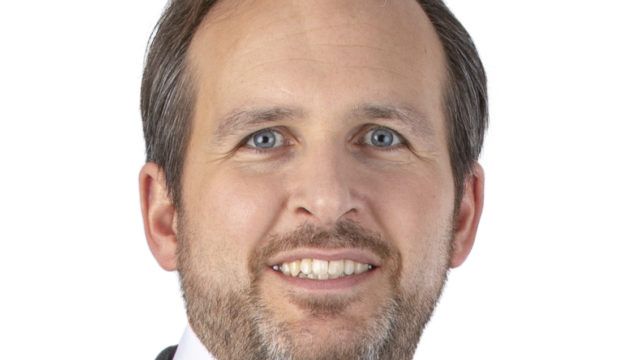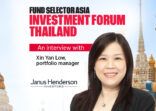Janus Henderson Investors has registered its Biotechnology Fund and its Global Sustainable Equity Fund for sale to retail investors in Singapore, according to a press release today.
Although neither of them are being marketed explicitly as “thematic funds”, the UK-headquartered money manager is launching into a retail investor base that has been receptive to several new funds recently distributed in Singapore which have carried the “thematic” branding.
The firm’s application to the Monetary Authority of Singapore for authorisation to distribute the two funds was reported by FSA early last month.
Janus Henderson has now also applied to the Securities and Futures Commission for authorisation to sell the funds to Hong Kong retail investors.
The Biotechnology Fund is carved out of the firm’s Global Life Services Fund, and was first launched as a Luxembourg Sicav in December 2018. Benchmarked against the Nasdaq Biotechnology Total Return Index, the $10.7m fund has 67% weighting to biotechnology companies and 17% allocation to pharmaceutical firms, with 80% exposure to the US, according to its factsheet. Top holdings include Gilead Sciences, Vertex Pharmaceuticals and Celgene.
In addition to stocks contained in the index, the fund concentrates on companies that develop small molecule or biologic drugs, according to the fund’s lead manager, Andy Acker.
“Our process focuses on the scientific and business drivers that are so critical to mitigating the risks and uncovering the opportunities presented by this dynamic sector,” said Acker in a statement.
Global Sustainable Fund
The Janus Henderson Global Sustainable Fund has been around for much longer, so there are metrics available to assess its performance.
The £962m ($1.16bn) fund was launched as an offshore insurance product in 2010, and has generated 122% cumulative return in UK sterling terms compared with 145% by the MSCI World index and 88% by the ethical equity sector average, according to FE Analytics data.
Translated into US dollars, the performance hasn’t been helped by the weakening pound sterling – particularly since the Brexit referendum in 2016. The fund has returned just 68% in dollar terms, compared with 124% and 60% by the index and sector respectively.
Nevertheless, over a shorter period, the Janus Henderson fund has outperformed both measures significantly, albeit at the expense of greater volatility (see table).
|
3-year cumulative return |
Annualised return | Annualised volatility | Sharpe ratio |
Alpha |
|
| Fund |
31.07% |
9.04% | 14.07% | 0.39 |
3.49 |
| Sector |
30.30% |
5.05% | 10.67% | 0.14 |
0.00 |
| Index |
17.58% |
9.96% | 11.50% | 0.56 |
0.00 |
Source: FE Analytics. Data in US dollars, 2 September 2016 – 3 September 2019
“We have a growth and quality bias, and see a close link between sustainability growth and innovation. Growth should outperform through this period of intense disruption from transition to a low carbon economy and the fourth industrial revolution,” Hamish Chamberlayne, the fund’s lead manager, told FSA.
“Environmental and social criteria are integrated across the whole of our investment process, from universe definition to stock selection, and are based on frequent company visits as well as fundamental research,” he said.
The portfolio holds 50-70 stocks, and each is held for three-to-five years. The fund’s annual turnover has averaged 25% during the past seven years, he said. It has a large overweight to information technology stocks, and its main underweight positions relative to the index are consumer staples, healthcare and energy.
Regionally, the fund has a higher exposure to Europe than the index, and lower exposure to Asia-Pacific and, especially, the UK. It also has a large overweight to cash, which suggests that conventional risk-aversion is also an investment consideration, in addition to its ESG mandate.
Janus Henderson Horizon Global Sustainable Equity Fund

Source: Janus Henderson, 30 June 2019
ESG process
Chamberlayne and his team have identified four megatrends, which are broken down into 10 themes, divided equally between environmental and social criteria.
The mega trends are: population growth, an ageing population, resource constraints and climate change. The environmental themes are: efficiency, cleaner energy, water management, environmental service and sustainable transport; the social themes are: sustainable property and finance, safety, quality of life, knowledge and technology, and health.
“We integrate ESG research into our stock analysis, with stocks chosen for the portfolio assigned for their ‘positive impact’, defined as providing products or services beneficial to the environment or society, promoting a responsible economy and confronting the challenges posed by the megatrends,” said Chamberlayne.
He assigns primary and secondary (where applicable) themes for each company selected for the portfolio.
For instance, Adidas is given a 100% weighing for its contribution to the “quality of life” – its primary theme – because it encourages active lifestyles and is a “leader in sustainable manufacturing”. Kingspan, a leader in high performance insulation, which helps reduce CO2 emissions, is 50% weighted for its primary theme of efficiency, and 50% for its secondary theme of sustainable property and finance.
Indeed, promoting CO2 reductions is a major issue for the manager, who describes his approach as “explicitly low carbon”.
“We believe the transition to a low carbon economy is a generational investment trend,” said Chamberlayne.
Many investment managers now routinely advertise the inclusion of ESG analysis into their investment processes, across a widely-recognised range of five styles, namely: exclusionary screening, positive screening, ESG integration, impact investing and active stewardship.
Some managers are also making efforts to dis-aggregate the specific contribution of ESG factors to a portfolio’s total return.
Meanwhile, others argue that artificial intelligence and machine learning can improve the measurement of corporate ESG risks to enhance investment portfolio performance.
Janus Henderson Global Sustainable Equity Fund vs ethical equity sector and MSCI World index


















